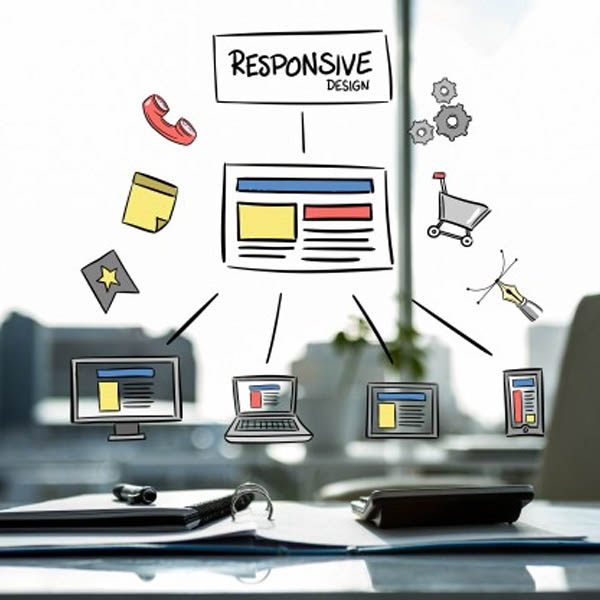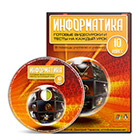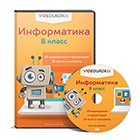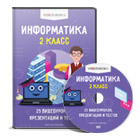A computer is an electronic device capable of manipulating number and symbols, first taking input, processing it, storing and giving out output under a control of set instructions which is known as a program. A general purpose computer requires the following hardware components: memory, storage device (hard disk drive), input device (keyboard, mouse etc.), output device (screen, printer etc.) and central processing unit (CPU). Many other components are involved in addition to the listed components to work together efficiently.
Computers can be classified by size and power as follows:
Personal computer: Personal computers are small computers based on a microprocessor. A personal computer has a keyboard for inputting data, a monitor for output and a storage device for saving data.
Workstation: workstations are usually powerful than a personal computer. It has more powerful microprocessor and a higher-quality monitor.
Minicomputer: Mini computers are multi-user computer capable of supporting from 10 to hundreds of users simultaneously.
Mainframe computer: Mainframe computers are powerful multi-user computer capable of supporting many hundreds or thousands of users simultaneously.
Super computer: Super computers are extremely fast computers that can perform hundreds of millions of instructions per second.
MAIN REPORT
COMPUTER SYSTEM
A computer system can be represented using the following block diagram:
CPU
Bus
Interface
Timing and
Control
Address Bus
ALU
I/O
RAM
ROM
Keyboard
Mouse etc.
Data Bus
Control Bus
Clock
The CPU is can be expanded into three main parts: The ALU (Arithmetic and Logic Unit), The Bus interface Unit, and The Control Bus. The clock is an electronic circuit that gives regular pulses to the CPU. Faster clock speeds means more pulses to the CPU and the instructions are stepped through faster. The memory chip contains millions of separate memory stores and each of these locations has a unique number. This is known as memory address. The CPU stores data at any of these addresses and fetch the content back when required.
RAM stands for Random Access Memory. These chips store the instructions for running the operating system and any computer application. This memory also stores all the data that is being worked on. RAM is a volatile memory which means that it only stores data while the computer remains switched on. When switched off, it loses all the stored data. ROM (Read Only Memory) on the other hand is a chip with program instructions permanently burned into it. The content is not lost even if the machine is switched off.
The CPU can either fetch data from or write data when the appropriate memory location is accessed. Such data is transferred from the CPU to the memory location along the Data Bus. The control Bus is a set of tracks on the computer’s motherboard that run from the CPU to the devices and works under the direction of the CPU.
LOGIC GATES
Logic gates perform logical operation on one or more logic inputs and produce a single logic output. It processes signals which represent true or false. It is called Boolean logic and is most commonly used in digital circuits. Logic gates are identified by their function: NOT, AND, NAND, OR, NOR, EX-OR and EX-NOR and they are usually represented by capital letters.
Logic Gate Symbols
There are two series of symbols for logic gates: the traditional symbols which have distinctive shapes making them easy to recognise so they are widely used, and the International Electro technical Commission (IEC) symbols which are rectangles with a symbol inside to show the gate function.
Traditional Symbol
Computer numbering system
Humans speak to one another in a particular language and we use different words and letters. Although we type words and letters in the computer, the computer translates those words and letters into numbers. Computers talk and understand in numbers. Those number systems are: Decimal, Hexadecimal, and Binary.
The Decimal Number System is the system is most frequently used in arithmetic and in everyday life. The decimal number system is also known as the base 10 number system as the position in the number represents an incremental number with a base of 10. Each position only contains a number between 0 and 9.
The Hexadecimal number system is used to represent memory addresses or colours. It is also known as the base 16 number system, because each position in the number represents an incremental number with a base of 16. Since the number system is represented in 16s, there are only 10 numbers and 5 letters (A to F).
The Binary number system is used by most machines and electrical devices to communicate. It is also known as the base 2 number system, because each position in the number represents an incremental number with a base of 2. Since it is represented it 2s, there are only 2 numbers that can be a value in each position 0 or 1.
CPU COMPONENTS
The CPU is the intelligence of the machine but it needs a pre-written program to create, use and modify the data. If the computer needs to compare two numbers, or add two numbers, this is carried out inside the CPU and the numbers have to be fetched into the CPU from the computer’s memory chip. The three main components of CPU are: Arithmetic logic Unit (ALU), Bus Interface unit, and the Control Bus.
Arithmetic Logic Unit (ALU) carries out all the calculations and decision making tasks. The ALU uses devices called gates that receive one or more inputs and based up what function they are designed to perform, outputs a result. The basic operations of an ALU include adding and subtracting binary values as well as performing logical operations such as AND, NOT, OR AND XOR.
The Bus Interface Unit takes the data to and from the CPU which is held inside internal registers (small memory stores) along the external Data Bus to read and write memory and devices. The Data Bus carries information in both directions. The Bus Interface Unit also places the required location addresses on the Address Bus, so that the required devices can be accessed for reading or writing.
The Control Bus is the physical connection that carries control information between the CPU and other devices within the computer. It decodes all program instructions and dictates all the CPU’s control and timing mechanisms. It sends out the read and write signals on the Control Bus.
COMPUTER MEMORY
The computer has to temporarily store the program and data in an area where it can be used by the computer’s processor to work. This area is known as the computer’s memory. It consists of computer chips that are capable of storing information. These information could be: the operating system (e.g. DOS, windows etc.), the instruction of the program to run (e.g. a database or a drawing program), or the data that is used or created (e.g. letters from word-processing or records from a database). There are different types of memory used in a computer system. They are: Cache memory, Random Access Memory (RAM), Read Only Memory (ROM), and Virtual Memory.
Cache memory is extremely fast memory that is built into a computer’s CPU (L1 cache) or in some cases located next to it on a separate chip (L2 cache). L1 cache is faster than L2 cache as it is built into the CPU. These days, newer computer come with L3 cache which is faster than RAM but slower than L1 and l2 cache. Cache memory is used to store instructions that are repeatedly required to run programs and helps to improve overall system speed. The reason it is so fast is that the CPU does not have to use the motherboard’s system bus for data transfer.
Random Access Memory (RAM) is the memory chip that consists of a large number of cells, each cell having a fixed capacity for storing data and unique address. RAM is a volatile memory which means all the programs and data in the memory is lost when the machined is switched off. There are different types of RAM modules available such as SODIMM, SDRAM, DDR, DDR2 and DDR3. SODIMM are used for laptops whereas the rest are used for desktop computers.
Read Only Memory (ROM) is a memory chip in which the program instructions are permanently burned into. It is non-volatile which means its content is not lost even when the machined is switched off. It is used to store some of the system programs that keep the computer running smoothly. For example computer BIOS (basic input out system) is stored on the ROM. There are different types of ROM available such as Programmable ROM (PROM), Erasable Programmable ROM (EPROM), and Electrically Erasable Programmable ROM (EEPROM).
Virtual Memory is a part of most operating system. It is used when the amount of RAM is not enough to run all the programs. If the operating system, an email program, a web browser, a word processor, a Photoshop application are loaded into the RAM simultaneously, the RAM will not be able to handle all applications and thus the computer looks at RAM for areas that have not been used recently and copies them onto the hard drive. This frees up space in RAM to load new application. But because the read/write speed of a hard drive is much slower than that of RAM, the performance is not satisfactory. It is not recommended to use virtual memory as it is slow. The solution to this problem would be to upgrade the memory.
SYSTEM SOFTWARE
A computer system is not complete without system software. For a computer to perform any tasks, both software and hardware are equally important. System software gives life to hardware. System softwares are the files and programs that make up a computer’s operating system. It includes libraries of functions, system services, driver for hardwares, system preferences, and other configuration files. System software comprises of Assembler, Debugger, Compilers, Operating System, File management tools etc. The system software is installed on the computer when the operating system is installed. It can also be updated by running programs such as “windows update”.
The system software is also called “low-level” software as it runs at the most basic level of the computer. It generates the user interface and allows the operating system to interact with the hardware; however system software is not meant to be run by the end user like application programs. Application programs such as web browser, or Microsoft word is often used by the end user whereas the end user does not use an assembler program unless he/she is a computer programmer. The system software runs in the background and thus the user does not have to worry about what the system software is doing.

 Получите свидетельство
Получите свидетельство Вход
Вход












 Personal computer structure (28.21 KB)
Personal computer structure (28.21 KB)
 0
0 558
558 0
0 Нравится
0
Нравится
0


